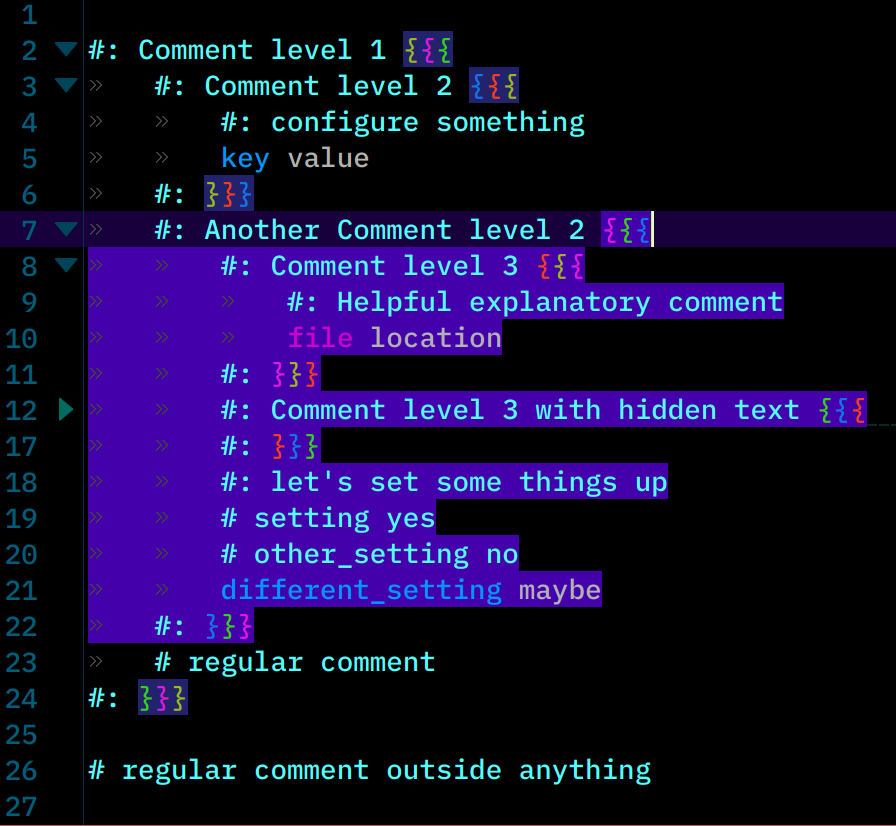from some@programming.dev to programming@programming.dev on 03 Jul 22:37
https://programming.dev/post/33310905
I noticed that the developer of kitty terminal uses this style of comments I have rarely if ever seen elsewhere:
outside
#: section {{{
inside
#: }}}
Kate text editor recognize sections for purposes of highlighting, folding etc. It’s really nice for me because I sometimes I have a difficult time navigating large text files. And it lets you nest them.
- what is this called?
- are there other ways to do it?
- is it standard among text editors? I believe Kovid the dev for
kittyis avimguy so presumably there is support there also. - why don’t more people use it? are there problems?
Screenshot that shows the code folding.
- Cursor is at the end of line 7 so the whole section line 7-22 is highlighted
- lines 12-16 are folded in a 3rd level comment
- I also included tab indents just to make it easier to see what’s going on (Kate treats it the same way regardless of indents)
- Highlighting/Mode > Scripts > Bash

I also like his style of distinguishing between narrative comments (starting with #:) and commented-out code (starting with #). Although in my example, Kate doesn’t treat them differently. Is there a term for this? Any conventions, support etc?
plain text used for screenshot
bash #: Comment level 1 {{{ #: Comment level 2 {{{ #: configure something key value #: }}} #: Another Comment level 2 {{{ #: Comment level 3 {{{ #: Helpful explanatory comment file location #: }}} #: Comment level 3 with hidden text {{{ you_cant see_this hidden_emoji “👁️” hidden_emoji2 " 👁️" hidden_emoji3 " 👁️" #: }}} #: let’s set some things up # setting yes # other_setting no different_setting maybe #: }}} # regular comment #: }}} # regular comment outside anything
___
For a real world example, see sample kitty.conf file provided on project website.
#programming
threaded - newest
Marker-based folding
^(update: just added a new link)^
The way you describe and show it, is called foldmethod “marker”. The advantage of markers are, that they are built into the file. The disadvantage is, its built into the file. I rather like having the source independent from folding markers. The good news is, you can change the foldingmethod in Neovim and ignore the marker comments and instead use your own method.
A simple one is just “manual”, where you set what is foldable and not. There are some automatic ones, like based on indentation and such. I was never a folding guy anyway, so don’t really know all the differences when to use and how they differ. Neovim has following foldmethod: manual, indent, expr, syntax, diff, marker. The “expr” method even allows you a custom code and logic.